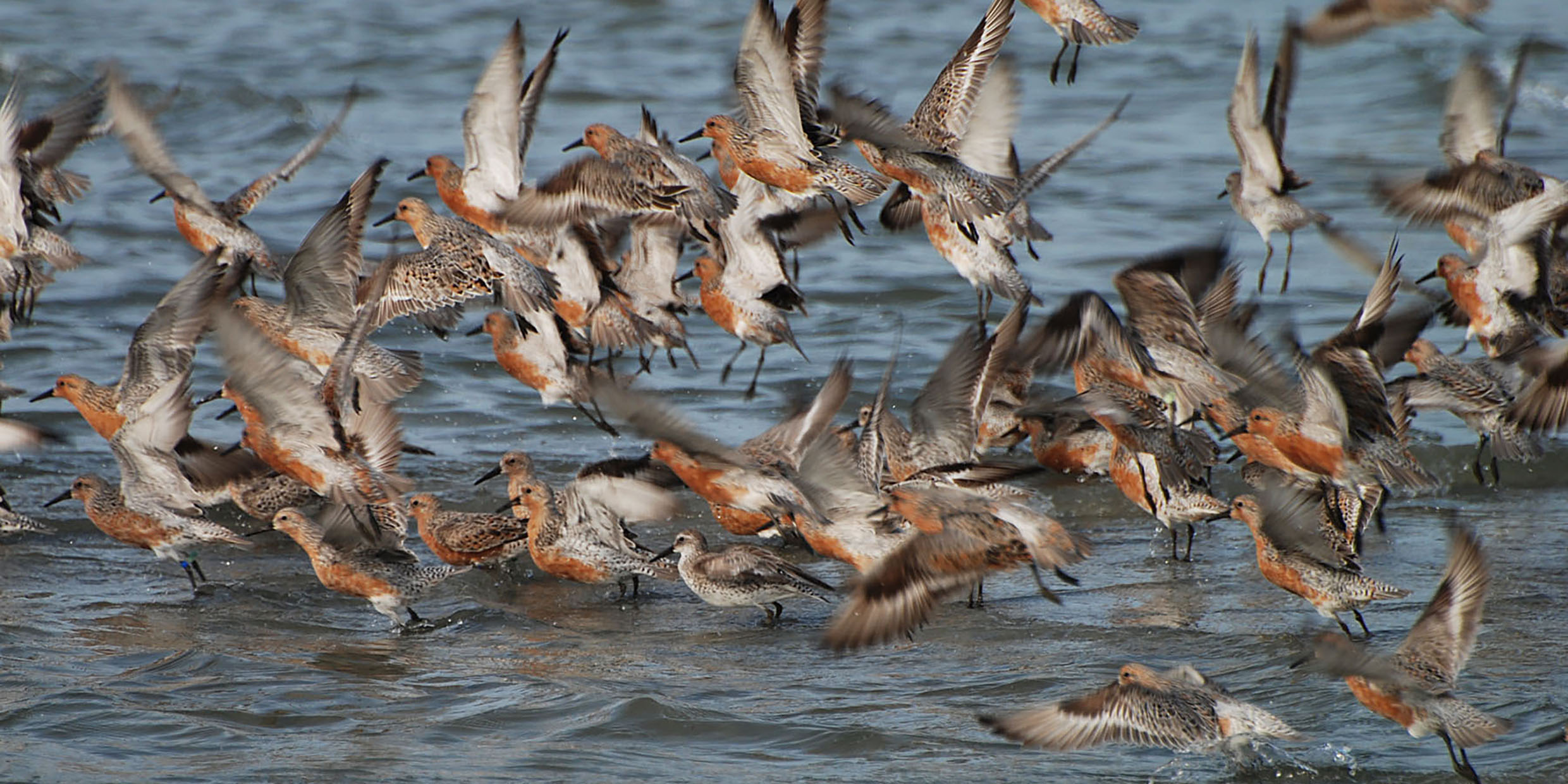Originally published 8 April 1996
“God loves a curved universe,” said designer and engineer Buckminster Fuller.
Let me tell you about one of the big curves, a curve that embraces the planet and closes upon itself.
For details of the story I am indebted to Brian Harrington’s recently published The Flight of the Red Knot. Harrington is an ornithologist on the staff of the Manomet Observatory for Conservation Sciences in Manomet. The red knot is a small shore bird that visits the Massachusetts shore in late summer.
Each year, the red knot travels more than 18,000 miles, from the southern tip of South America to the arctic islands of northern Canada and back again.
From October to February, the red knot lives and feeds on the beaches and mud flats of Tierra del Fuego, the southernmost land on Earth, excluding Antarctica. In the austral summer, the bird replaces its primary feathers in a long molt, which ensures that its flight equipment is in top condition when, in February, it lifts off in flocks of hundreds or thousands for the journey north.
Up the coast of Argentina, across the hump of Brazil, out across the trackless Atlantic, the little birds go, stopping occasionally along the way to fuel up with fat. The longest overwater leg of the journey requires non-stop flying for a week.
In mid-May they arrive on target at their feeding grounds on the marshy shore of Delaware Bay, just as horseshoe crabs are laying their eggs by the millions. After a few weeks of gorging themselves — a single red knot might devour 135,000 horseshoe crab eggs — they take to the air again for a non-stop flight to islands of the Canadian archipelago north of Hudson Bay.
Here, in the northern summer, they mate and breed, each female laying four speckled eggs which she and her mate incubate in turns. Baby knots, like other young shorebirds, are up and about as soon as they hatch, growing rapidly and replacing natal down with juvenile feathers in preparation for flight.
By mid-July, the female adult birds head south again, and male adults follow a few weeks later. The juveniles fend for themselves until late August, when they too take to the air for the 9,000-mile journey to Tierra del Fuego.
These young birds in their thousands, without adult guides, find their way along an ancient migration route, down across New England’s Atlantic beaches, across the Atlantic to Guyana and Surinam, then down along the east coast of South America, arriving with precision at just those places along the way where they are sure to find food.
A map of their journey and the knowledge they need for navigation is part of their genetic inheritance. When you consider that they started their lives, like the rest of us, as a single information-packed fertilized cell, their migratory feat stands as one of the great wonders of the natural world. That single cell contains the biological equivalent of a set of charts, a compass, a sextant, and maybe even something equivalent to a satellite navigation system.
How do they do it? No one knows. The sun, the stars, Earth’s magnetic field, angles of polarized light: All may provide cues to keep the birds on course.
Harrington writes about watching flocks of red knots take off from the shore of Delaware Bay for their flight to Canada, veering first to the left, then to the right, in ever narrowing deviations, as if they were somehow calibrating their navigational equipment before setting a final course.
I wonder if their flocking and considerable skills of flying in formation might not be related to their navigational prowess. Surely, it is not just one bird that guides the rest. Every bird must exercise its navigational instinct. The flock must integrate the course settings of all the birds, striking an average, in a spectacular feat of parallel information processing.
If this guess is correct, the red knot’s flight might be a case where evolution has favored the group, as opposed to the individual.
The deepest question of all is how the birds ever got started on this ancient annual circuit, this endless summer of eating, molting, mating, and breeding that so brilliantly utilizes the planet’s far-flung resources.
The answer to that question is lost in the deeps of time. But think of the many elements of creation that are tied together in the red knot’s flight: deep time, geological history, climate, the motion of the stars, sun and moon, the Earth’s magnetic field, light, temperature, wind, water, mussels, clams, horseshoe crabs, sex, energy, DNA, humans who churn up beaches with recreational vehicles, and humans who travel thousands of miles to band and observe birds — and God knows what else, all bound up in one little flier’s spectacular circular flight.
The lesson of the red knot is that the universe is one. God loves a curve because the curve is the line that turns back upon itself, binding, reinforcing, making whole.




Simply wonderful! …and so true.